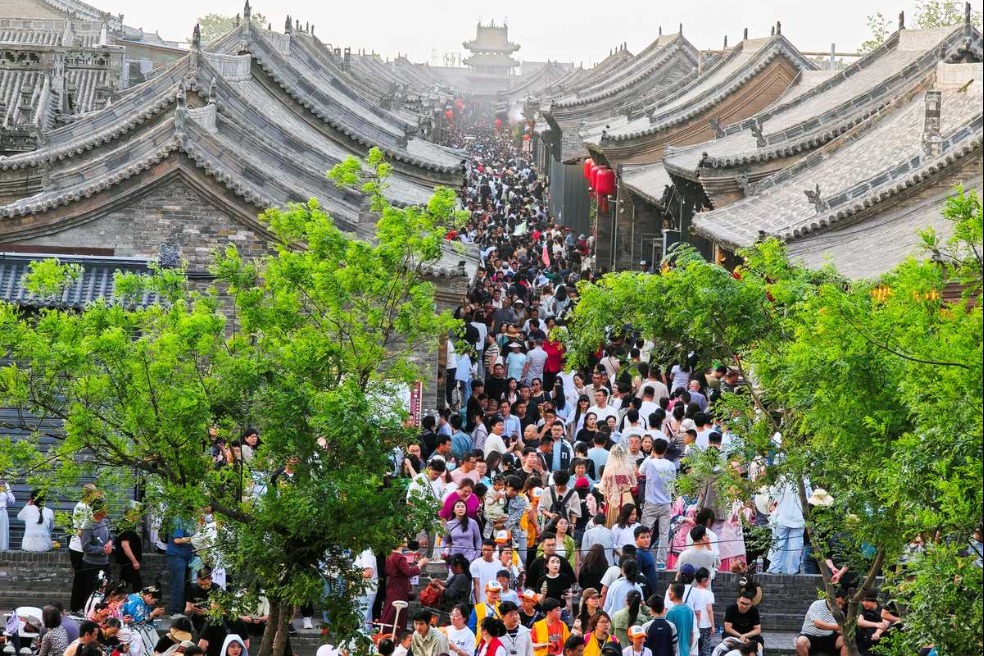Who will win as China's economy changes?

Could erstwhile Asian strategic rivals end up as big winners from China's economic success?
In one sense, at least, Asian economies are already winning from Chinese growth — slack global demand has meant that China increasingly powers the growth of nearly every major economy in Asia.
But the question increasingly matters in another sense, as well: Chinese leaders are committed to rebalancing at least some elements of their country’s economy. And while that will mean a more competitive and powerful China, it will also create new opportunities for those countries in Asia that get manufacturing and investment policies right.
Why the change? China is approaching the upper limit of its existing growth model. It has emerged from the global crisis earlier and stronger than nearly any other major economy. But China’s leaders are hardly complacent about their country’s future economic path. To the contrary, despite remarkable successes, Premier Wen Jiabao has repeatedly called the current model – which relies disproportionately on exports and fixed-asset investment – “unbalanced, unstable, uncoordinated and unsustainable”.
China produces much but consumes little. The creation and perpetuation of its production-intensive economic model owe much to inefficient capital allocation.? Vast regional disparities mean wide gaps in living standards and quality of life. And China’s investment-intensive growth model has exacted heavy environmental and energy costs.
For these reasons, China’s growth model is almost certain to change in the coming years as Beijing works to establish a more rational balance between production and consumption and tempers its long-standing preoccupation with GDP growth in favour of a greater emphasis on human capital-oriented growth.
That, in turn, will yield important changes in China’s political economy. The country will become more urban. Capital allocation could begin to shift from corporations to more households. Interior China will become more developed. And Chinese industry will move rapidly up the value chain.
Indeed, Beijing has long been determined to develop higher-value-added and technology-intensive industry, and its huge capacity to mobilise domestic capital gives it the power to do so. That means more competition for multinationals, including in third-country markets, as Chinese firms produce substitutable (but cheaper) products. But it will also give others opportunities to fill a vacuum.
Take labour-intensive manufacturing in coastal China. Export-oriented manufacturers are already reassessing traditional production strategies as labour costs rise. There are stronger incentives to relocate production to interior China. And new options are emerging as some choose to leave China entirely rather than relocate inland.
For example, rising costs in China could make Indonesia a more attractive hub for some production. This would help drive Indonesian growth in the near term and ultimately wean its economy off its traditional reliance on natural resource exports. As Chinese demand levels grow, Indonesian manufacturers will also benefit by producing and selling their products in China.Likewise in Vietnam, Thailand, and even smaller economies like Cambodia.
For India, rising incomes and higher-value-added production in China could bring benefits. Real appreciation of the renminbi, alongside growing Chinese demand, would help India narrow its trade deficit with China over the next five years.? And with the growth of manufacturing, not least in southern states such as Tamil Nadu, India could also capitalise in some areas of production as China moves up the value chain.
But huge obstacles remain. Some in India view this as a backdoor to relaxing labour laws. And such policies could falter, too, on land acquisition.
That would be a shame. Investors are aggressively seeking new opportunities in Asia. So government policies – including new investments in infrastructure, fiscal incentives and tax breaks, and improvements in supply and distribution networks – will shift Asia’s industrial landscape.
Who will be the winners? Who will surge ahead? Policy choices over the next three to five years will play a central role in determining the answers.
The author is head, Asia Practice Group, at Eurasia Group, and is also adjunct senior fellow for Asia at the Council on Foreign Relations, Washington, DC
- Two gynecologists punished for research misconduct
- Chinese scholars publish biologics guideline in international journal
- Beijing to host world humanoid robot games
- Smart planting pod brings farm to urban homes
- Young artisan transforms Miao embroidery into modern fashion accessories
- Xi's speech marking 100th anniversary of trade union federation published





































